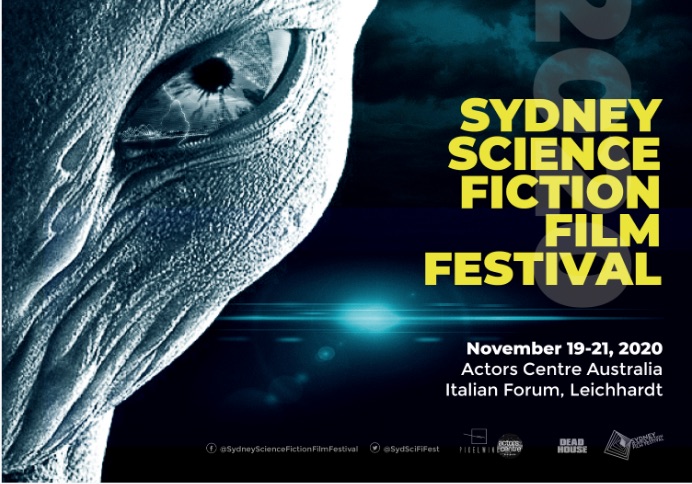JUSTIN KURZEL’S PORT ARTHUR FILM IN CANNES COMPETITION
 Thursday, June 3, 2021 at 10:36PM
Thursday, June 3, 2021 at 10:36PM
Australian director Justin Kurzel will vie against some of international cinema’s biggest names when his film Nitram screens in Competition at the 2021 Cannes Film Festival.

Chronicling the events leading up to the Port Arthur shooting massacre in 1996, Nitram will be the first Australian film since Sleeping Beauty in 2011 to figure in the prestigious competitive strand in over a decade. Shot under quarantine conditions in late 2020 with American actor Caleb Landry-Jones in the lead role (who goes unnamed in the film), Kurzel’s latest fielded howls of protest when it was broken the story of Australia’s worst mass killer was being produced.
 Kurzel (Snowtown, 2011; True History of The Kelly gang, 2019) will be amongst such filmmakers as Wes Anderson (The French Dispatch), Leox Carax (Annette, the Festival’s Opening Night choice), Paul Verhoeven (Benedetta; pictured, right), Sean Penn (Flag Day), Sean Baker (Red Rocket), Asghar Farhadi (A Hero), and Palme d’Or winners Jacques Audiard (Les Olympiades) and Apichatpong Weerasethakul (Memoria)
Kurzel (Snowtown, 2011; True History of The Kelly gang, 2019) will be amongst such filmmakers as Wes Anderson (The French Dispatch), Leox Carax (Annette, the Festival’s Opening Night choice), Paul Verhoeven (Benedetta; pictured, right), Sean Penn (Flag Day), Sean Baker (Red Rocket), Asghar Farhadi (A Hero), and Palme d’Or winners Jacques Audiard (Les Olympiades) and Apichatpong Weerasethakul (Memoria)
In announcing the 2021 line-up artistic director Thierry Fremaux noted the record 24 films in competition and an unprecedented number of female directors, among them Hungarian helmer Ildikó Enyedi (The Story of My Wife), French director Julia Ducournau (Titane) and festival favourite Mia Hansen-Løve (Bergman Island).
While Closing Night honours remain a mystery and potential Hollywood blockbusters premiering on The Croisette unnamed, the full roster announced is:
COMPETITION:
Annette, Leos Carax
Tre Piani, Nanni Moretti
Everything Went Fine, François Ozon
A Hero, Asghar Farhadi
Titane, Julia Ducournau
The French Dispatch, Wes Anderson
Red Rocket, Sean Baker
Petrov’s Flu, Kirill Serebrennikov
France, Bruno Dumont
Nitram, Justin Kurzel
Memoria, Apichatpong Weerasethakul
Lingui, Mahamat-Saleh Haroun
Paris 13th District, Jacques Audiard
The Restless, Joachim Lafosse
La Fracture, Catherine Corsini
Casablanca Beats, Nabil Ayouch
The Worst Person In The World, Joachim Trier
Compartment No.6, Juho Kuosmanen
Ahed’s Knee, Nadav Lapid
Drive My Car, Ryusuke Hamaguchi
Bergman Island, Mia Hansen-Løve
Benedetta, Paul Verhoeven
The Story Of My Wife, Ildikó Enyedi
Flag Day, Sean Penn
OUT OF COMPETITION:
Aline, The Voice Of Love, Valérie Lemercier
Stillwater, Tom Mccarthy
The Velvet Underground, Todd Haynes
Emergency Declaration, Han Jae-Rim
De Son Vivant, Emmanuelle Bercot
Bac Nord, Cédric Jimenez
MIDNIGHT SCREENING:
Bloody Oranges, Jean-Christophe Meurisse
CANNES PREMIERE:
Hold Me Tight, Mathieu Amalric
Cow, Andrea Arnold
Love Songs For Tough Guys, Samuel Benchetrit
Deception, Arnaud Desplechin
Jane Par Charlotte, Charlotte Gainsbourg
In Front Of Your Face, Hong Sang-Soo
Mothering Sunday, Eva Husson
Evolution, Kornél Mundruczo
Val, Ting Poo, Leo Scott
JFK Revisited: Through The Looking Glass, Oliver Stone
SPECIAL SCREENINGS
H6, Yé Yé
Black Notebooks, Shlomi Elkabetz
Mariner Of The Mountains, Karim Aïnouz
Jane Par Charlotte, Charlotte Gainsbourg
Babi Yar, Context, Sergei Loznitsa
The Year Of The Everlasting Storm, Jafar Panahi, Anthony Chen, Malik Vitthal, Laura Poitras, Dominga Sotomayor, David Lowery, Apichatpong Weerasethakul
UN CERTAIN REGARD
The Innocents, Eskil Vogt
After Yang, Kogonada
Lamb, Valdimar Jóhannsson
Noche De Fuego, Tatiana Huezo
Bonne Mère, Hafsia Herzi
Blue Bayou, Justin Chon
Moneyboys, C.B Yi
Freda, Gessica Généus
Un Monde, Laura Wandel
Commitment Hasan, Hasan Semih Kaplanoglu
House Arrest, Alexey German Jr.
Let There Be Morning, Eran Kolirin
Unclenching The Fists, Kira Kovalenko
Women Do Cry, Mina Mileva, Vesela Kazakova
Rehana Maryam Noor, Abdullah Mohammad Saad
Great Freedom, Sebastian Meise
La Civil, Teodora Ana Mihai
Gaey Wa’r, Na Jiazuo
 Australia,
Australia,  Cannes,
Cannes,  Film Festival
Film Festival 













